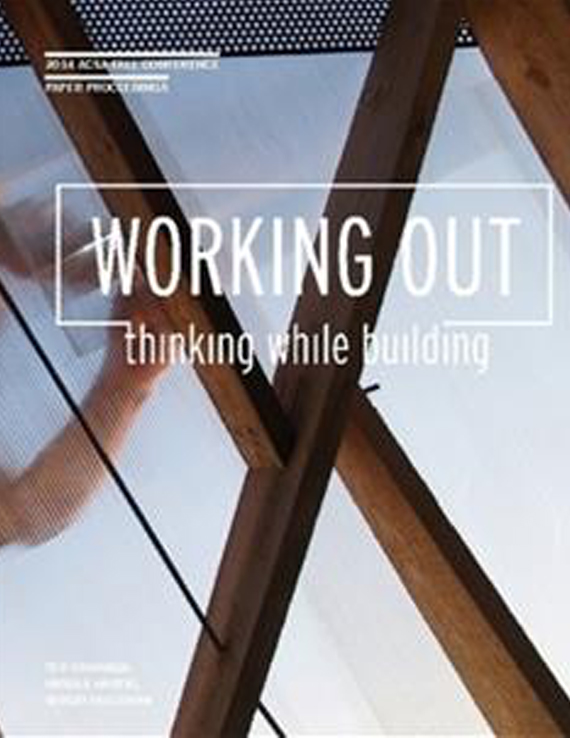Author(s): Jane Murphy
Wherein, Two Habitat Directors, Two shop directors, Three faculty members, Ninety students (give or take a few) participate in Six design studios and One seminar over Six academic years and Three summers, write Six grant applications and finally build One sunny house for One happy family.Acknowledging the benefits and difficulties of many design/build projects in academia (such as annual attempts to define projects, each with new clients and widely varying budgetary and bureaucratic restraints) the Clark County Community Habitat for Humanity (CCCHfH) / Knowlton School of Architecture (KSA) FabHouse project attempted to define a new way of designing and building volunteer-constructed homes—not one-offs, but a system, to be improved with each iteration, and designed to be built not necessarily be architecture students, but by typical Habitat volunteers, including architecture students in that group.Dovetailing with the granting of HUD Neighborhood Stabilization funding in 2008, a federally funded grant administered at the state level, the initiative had the potential for resulting in the construction of a whole neighborhood of houses, and a community building. From Spring of 2007 to Winter of 2013, a total of 6 design studios and one quarter long workshop were conducted that eventually produced two sets of construction drawings, one ultimately leading to the construction of one home, finally dedicated in December 2013.The project seemed to have all the pieces it needed to be a success, but its successes are greatly overshadowed by its failures. This paper would evaluate the project on its merits, and ask what went wrong. Why were more houses not built? The process has to be deemed a failure in all aspects except for the fact that a family now happily occupies a light-filled, energy efficient, home—one that will not be repeated, though it may deserve to be.
Volume Editors
Sergio Palleroni, Ted Cavanagh & Ursula Hartig
ISBN
978-0-935502-94-7

 Study Architecture
Study Architecture  ProPEL
ProPEL 
